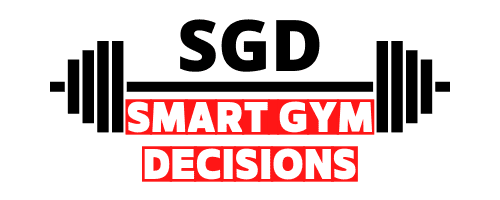Hey folks, let me tell you something – if there’s one thing to remember when it comes to working out, particularly in the shoulder area, it’s this: don’t start without a proper shoulder warm up. the first shoulder warm up: ups are first up! That’s right – before you begin any exercise routine involving your shoulders, you should take a few minutes to warm them up and get them ready.
Think of it like this – if you don’t warm up your shoulders before you exercise, you’re putting yourself at risk of injury and not getting the most out of your workout. So let’s take a look at some of the most effective shoulder warm-up exercises you can do to get your shoulders primed for a great workout session.
Benefits of Shoulder Warm-Up Exercises
The primary benefit of a good shoulder warm-up is injury prevention. Warming up your shoulders properly reduces the risk of straining or tearing muscles and ligaments, as well as easing stiffness that can be caused by cold temperatures.
In addition to this, warming up your shoulders, chest muscles and upper body also increases their range of motion, helping you perform exercises with better form and technique. Moreover, it helps enhance muscle activation so that you can get more out of your workout session.
So let’s take a look at some key shoulder blade and other shoulder joint warm–up exercises that will help keep you safe, prevent injuries, and improve performance!
Shoulder Warm-Up Exercises: What to Do
One great way to warm up your shoulders is by using dynamic stretching exercises such as arm circles, shoulder shrugs, arm circles and rotations, overhead press, and wall slides. These are all simple exercises that you can do to help activate your shoulder muscles, like the rotator cuff muscles, and get them ready for the workout ahead.
Another great option is foam rolling. Foam rolling helps to loosen up tight muscles in your shoulders, allowing them to move more freely when performing exercises. And finally, a few minutes of light cardio such as jogging or jumping rope can also be beneficial for helping warm your shoulders up before you start exercising.
Band Pull-Apart
Using resistance bands for the shoulder warm-up is a great idea. By squeezing your hips square shoulder blades together during this exercise, you can activate the internal rotation and external rotation of your rear delts and upper back. This exercise teaches you to use the external rotation and internal rotation and external rotation of your hips, shoulder flexion rear delts and upper back to initiate pulls instead of pulling with your arms.
Performing this move can both warm up and strengthen your shoulders, as well as target your upper back. Stand upright while holding one end range a resistance band at chest level with your palms facing up or down. Extend your arms out to your sides and pull the top loop resistance band until you feel maximum tension in neutral spine, while bringing your elbows and shoulder blades together. Hold for a beat, then return the top loop resistance band to the starting position in a controlled manner. Repeat for reps.
YTW
YTWs are helpful for preparing your whole body for movement, joints to move easily and your muscles to be stable during movement. When you repeat the exercise, your whole body and joints gradually become ready for movement, and your upper body and your muscles become activated, particularly your rear delts which are often overlooked. This is an obvious rotator cuff warm up exercise.
You have the choice of doing these exercises with or without weights, but if you choose to use weights, opt for very light ones like the two-pound ones that you may typically overlook. The idea of activation exercise is not to exhaust yourself, but just to activate your muscles.
Prepare your shoulders to have both mobility during movement and stability during movements with loads as a YTW exercise. Each repetition includes three different movements to get shoulder mobility and enhance your efforts during movement without overwhelming your core muscles again. The exercise aims to activate your rear delts, which usually do not receive proper attention during workouts and during your shoulder warm ups with up, ups, up and–ups.
To perform this exercise, stand straight with a slight hinge at your hips and extend your arms. Exhale and lift your two arms straight up to form a Y shape around your head. Inhale and bring them back down. Then exhale and lift your arms out to the sides to form a T shape, and lower them down again. Finally, exhale and lift your two arms straight up to form a W shape while keeping your shoulder blades back and down, before lowering your arms once again.
Scapular Slide
To improve the range of motion in your shoulders, try this shoulder mobility only exercise in which you stand in front of a wall. While it mainly focuses on mobility in healthy shoulders, it may still cause fatigue if you are not accustomed to performing overhead movements. Take breaks as necessary, but don’t forget to prioritize improving your full range. of shoulder motion.
This warm-up is gentle and won’t strain your muscles. Scapular slides help you practice reaching left hand overhand grip with one arm overhead. To help you feel the position of one arm above your shoulders, you can take standing position or use a bench press or wall for feedback.
To do this exercise, stand facing a wall with your elbows bent at a 90-degree angle and your palms facing upward. Attempt to touch the backs of your forearms and upper arms to the wall, or sit on an upright weight bench or chair if necessary. Gradually straighten your arms until they are fully extended above your head, making sure to keep your neck and rib cage in the correct position. Keep your forearms against the wall or aligned with the top of the bench. Lower your arms back down slowly.
Banded Overhead Reach
To perform this move, you will need a mini resistance band. You won’t be pressing anything upward your body, your shoulder blades, head, back pockets or left hand, but instead, you’ll focus on reaching the resistance band with your left foot. This movement is a highly functional move that benefits your shoulders. Reaching is an everyday movement that you can strengthen with this exercise, not just in the gym but also in your daily activities at home.
In this exercise, you will learn to stabilize your back shoulder joint and core and avoid flaring your back shoulder blade and socket rib cage when you reach the overhead shoulder press. This move targets your shoulder and thoracic mobility by extending your arms up and over the shoulder width of your body, chest and head. By performing the banded overhead bench press with shoulder width reach, you can better prepare yourself for the shoulder presses and overhead carries.
Secure wrap a mini resistance band around your right foot and wrists. Extend your arms forward just below chest level. Pull your forearms sideways until you feel tension in the resistance band below. Gradually raise your arms up and over your head, while continuing to maintain outward tension against the bands. Once you have reached your maximum range of motion, slowly lower your arms.
Scapular Pull-Up
Scapular pull-ups can help you develop scapular control and overhead stability. They are particularly useful for building strength towards the end of your warm-up. Similar to scapular push-ups, this exercise doesn’t involve moving your elbows. So, you don’t need to perform a full pull-up to try it. In fact, practicing this move can help you gain enough strength to perform your first pull-up.
This exercise focuses on improving your ability to hold weight overhead by targeting your stability and strength. It is a great alternative for individuals who are unable to perform a full pull-up, and can also help build the necessary full body confidence and strength to eventually perform a full pull-up. Scapular pull-ups do not involve the use of actual weights, yet they effectively prepare your core tight upper body well for lifting and holding heavy weights overhead.
Hang from the pull-up bar with your arms fully extended. Engage your core and glutes. in the starting position in push up position. Pull your shoulder blades down towards your rib cage while keeping your elbows straight. in push up position Pause slowly raise yourself briefly at the top. Lower yourself back down slowly to the starting position in push up position back to starting position again.
Incorporating Shoulder Warm-Up Exercises into Your Routine
Shoulder warm-up exercises are an important part of any pre-workout routine. They help to increase circulation, reduce risk of injury, and improve range of motion. Adding in scapular push-ups, shoulder dislocates and external rotations, and scapular pull-ups can help you get the most out of your shoulder workout and ensure that you are lifting safely.
When performing these shoulder socket up exercises make sure to keep form at the forefront. Start with lighter bands or weights as needed until you are comfortable with the movements. For optimal results, aim for 3 sets of each exercise with 8–12 reps per set and a 30 second rest period between sets. With consistent practice, these three shoulder socket up and warm up routine get-up exercises can help you build the necessary strength and stability to reach your fitness goals.
So, if you’re looking for a way to your shoulder health, improve your performance in the gym or increase shoulder mobility or joint mobility, adding these exercises into your routine is a great place to start. You’ll be amazed at what a difference it can make in your shoulder mobility and joint health!
Best Shoulder Warm-Up FAQs
Q: How often should I do shoulder warm-up exercises?
A: The frequency of your shoulder warm-up routine will depend on the type and intensity of exercise you are doing. Generally, it’s best to perform them prior to every workout. That way, you can ensure that your shoulder muscles, and joints are properly prepared for the movements ahead.
Q: What are the benefits of doing the shoulder warm ups, up, ups, up, ups and up make-up exercises?
A: Shoulder and shoulder warm ups, up, ups and-ups can help reduce the risk of injury, increase range of motion, maintain tension and improve coordination. These and shoulder warm ups, up, ups, up, ups, and exercises also prepare your shoulder socket and muscles for more intense exercise, allowing you to get the most out of your shoulder workout done.
Q: How many times should you train shoulders per week?
A: How often you train your shoulders will depend on the type of workouts you’re doing. For general fitness and toning, it’s best to target your shoulders two to three times a week with light exercises. If you are looking to build strength and muscle mass, you can increase the frequency to four or more days per week with more intense exercises.
Q: What exercises are best for the shoulder warm up get-up?
A: The shoulder joint is complex and requires a variety of exercises to ensure a comprehensive full shoulder warm-up. Exercises like arm swings, shoulder rolls, and trunk rotations are great for maintaining tension and gradually increasing the mobility and blood flow to shoulder joint. For more advanced exercises, try weighted shoulder presses and lateral raises.





